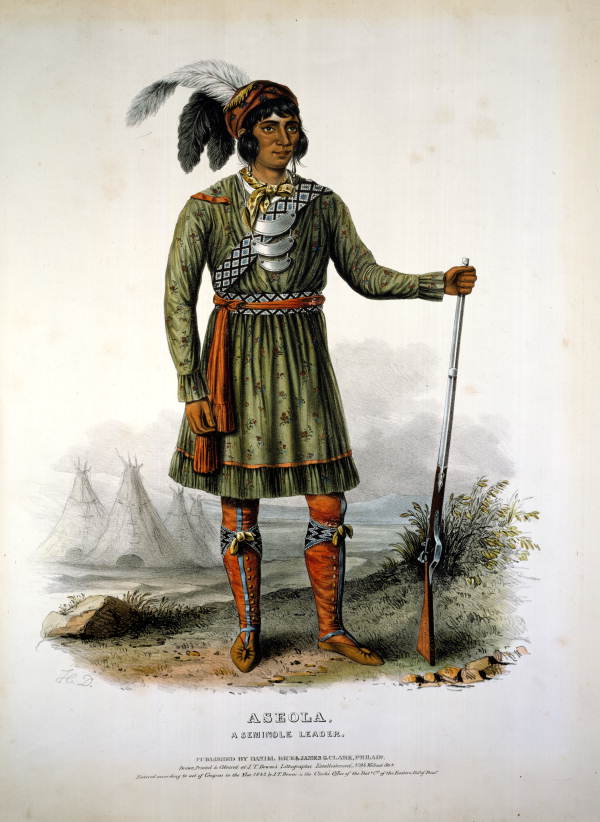|
After the United
States acquired Florida from Spain, and
fought the First Seminole War with the
Indians in Florida, a treaty was signed
in which most Florida Indians agreed
(or at least the Indian leaders
agreed), to move onto a reservation in
the middle of Florida. Many of the
Seminoles did not want to move onto the
reservation, and many of those who did
move, began to leave and return to
their traditional lands. Conflicts with
white settlers occurred, and by the end
of 1835, a full-scale war was in place
between the Florida government, the
white settlers, on one side, and the
Seminoles and escaped slaves living
with the Seminoles on the other
side. One of the factors
in both Seminole Wars was the existence
and growth of slavery in Florida, and
the natural desire of many of the
enslaved blacks to escape their
imprisonment. Many of the Florida
slaves who did escape, migrated to the
Seminole lands seeking refuge. When the
slave owners attempted to recapture the
escaped blacks, these encounters often
led to conflict and violence with the
Seminoles. This war was the
most expensive Indian War in U.S.
history, and has the added distinction
of also being an Indian War in which
the Native Americans did not lose. In
effect, the U.S. declared the war over
in 1842, even though the Seminoles had
not in fact been defeated. Below are some facts
and figures on the Second Seminole
War. The
Second Seminole War
Began:
December 23, 1835 TheSecond
Seminole War
Ended:
August 14, 1842 The
Second Seminole War Was Fought
Between:
United States vs. Seminole Indians of
Florida The
Location of the Second Seminole
War:
South and Central Florida The
Second Seminole War Resulted
In:
Seminole Indians were allowed to remain
in South Florida, though some were
encouraged to move West. In effect, the
Army could not defeat the Seminoles,
and they were allowed to remain in
place. Major
Battles and Campaigns of the Second
Seminole War: Gaines'
Expedition (1836) Scott's
Expedition (1836) Battle
of Hatchee-Lustee (1837) Battle
of Lake Okeechobee (December 25,
1837) Battle
of Loxahatchee (January 24,
1838) "Harney
Massacre" (July 23, 1839) Second
Seminole War
Casualties:
Seminole
Casualties: Unnknown (Seminoles usually
carried away their dead and
wounded) U.S.
Military Casualties: 1,600
(approximately)
1.
Kohn, George C. Dictionary
of
Wars.
New York: Facts On File
Publications. 1999. 2.
Dupuy, R. Ernest and Trevor N. Dupey.
The
Harper Encyclopedia of Military
History: From 3500 B.C. to the
Present "The
History Guy" is a Registered Trademark. Contact
the webmaster |
